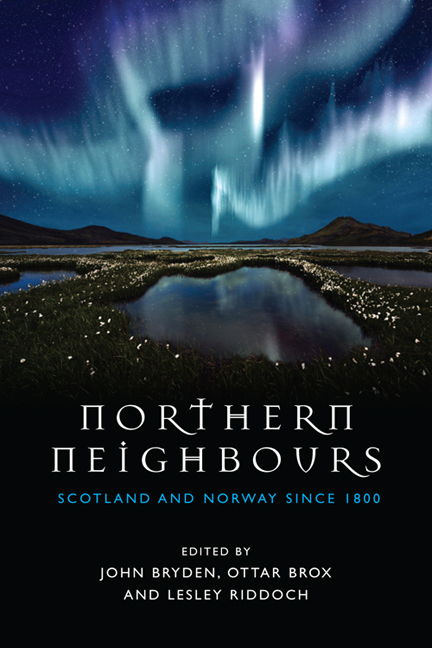Book contents
- Frontmatter
- Contents
- Acknowledgements
- Foreword
- 1 Introduction
- 2 Towards a Theory of Divergent Development
- 3 Cousins Divided? Development in and of Political Institutions in Scotland and Norway since 1814
- 4 Agrarian Change in Scotland and Norway: Agricultural Production, Structures, Politics and Policies since 1800
- 5 The Evolution of Local Government and Governance in Scotland and Norway
- 6 The Development of Industry and North Sea Oil in Scotland and Norway
- 7 Reflections on the Making of Norway
- 8 Money and Banking in Scotland and Norway
- 9 Religion in Scotland and Norway
- 10 The Nordic Welfare Model in Norway and Scotland
- 11 Access, Nature, Culture and the Great Outdoors – Norway and Scotland
- 12 Education in Norway and Scotland: Developing and Re-forming the Systems
- 13 Norway and the United Kingdom/Scotland after the Second World War
- 14 Conclusions
- The Contributors
- Bibliography
- Index
5 - The Evolution of Local Government and Governance in Scotland and Norway
Published online by Cambridge University Press: 05 August 2016
- Frontmatter
- Contents
- Acknowledgements
- Foreword
- 1 Introduction
- 2 Towards a Theory of Divergent Development
- 3 Cousins Divided? Development in and of Political Institutions in Scotland and Norway since 1814
- 4 Agrarian Change in Scotland and Norway: Agricultural Production, Structures, Politics and Policies since 1800
- 5 The Evolution of Local Government and Governance in Scotland and Norway
- 6 The Development of Industry and North Sea Oil in Scotland and Norway
- 7 Reflections on the Making of Norway
- 8 Money and Banking in Scotland and Norway
- 9 Religion in Scotland and Norway
- 10 The Nordic Welfare Model in Norway and Scotland
- 11 Access, Nature, Culture and the Great Outdoors – Norway and Scotland
- 12 Education in Norway and Scotland: Developing and Re-forming the Systems
- 13 Norway and the United Kingdom/Scotland after the Second World War
- 14 Conclusions
- The Contributors
- Bibliography
- Index
Summary
INTRODUCTION
Local governance is one of the key areas flagged up whenever the ‘Nordic model’ is being compared to the UK or Scotland. In this chapter we discuss the main political, social and economic factors and processes that explain the very different structures of local governance and powers and autonomy of local government in Norway and Scotland today.
Our story starts in the medieval period, when functions of local governance in both Scotland and Norway were essentially divided between the monarch's secular local supporters and appointees, and the organs of Church government, centred around the parish. Local governance was very important in this period because communications by land and sea were slow, difficult and dangerous, and centralised governance was impossible. The kingdoms were also fragile, and support from local powerholders had to be won, and kept.
The Reformation did not greatly change the nature of local governance, especially those functions accorded to the Church, which included providing subsistence to the poor and maimed, and in the later period schools as well as certain quasi-judicial matters, especially before the Enlightenment when moral offences were punished by the congregational ‘courts’, the most severe punishment being banishment or exile.
However, the nature of local government changed in the late eighteenth and nineteenth centuries, in Scotland following Union with England in 1707 and nineteenth-century extensions of the franchise, and in Norway after independence from Denmark in 1814. Our focus in this chapter is mainly on this period and subsequent major reforms, partly associated with the extension of the franchise in the later nineteenth and early twentieth centuries. However, we also examine and describe the structure, functions, powers and financing of local government in Scotland and Norway today, highlighting some of the key differences, and the political, economic and social consequences of these differences in the context of devolution and the independence referendum.
MEDIEVAL LOCAL GOVERNANCE IN SCOTLAND AND NORWAY
Although accounts of early local government and governance in Scotland and Norway are rare, the available historical evidence suggests that they had similar origins. Both countries were founded when central monarchical governments were weak and contested, both had large and difficult terrain and geography, and sparsely settled and small populations, implying difficulties of communication and central control, and both were experiencing emerging nationhood and national identity.
- Type
- Chapter
- Information
- Northern NeighboursScotland and Norway since 1800, pp. 92 - 122Publisher: Edinburgh University PressPrint publication year: 2015



